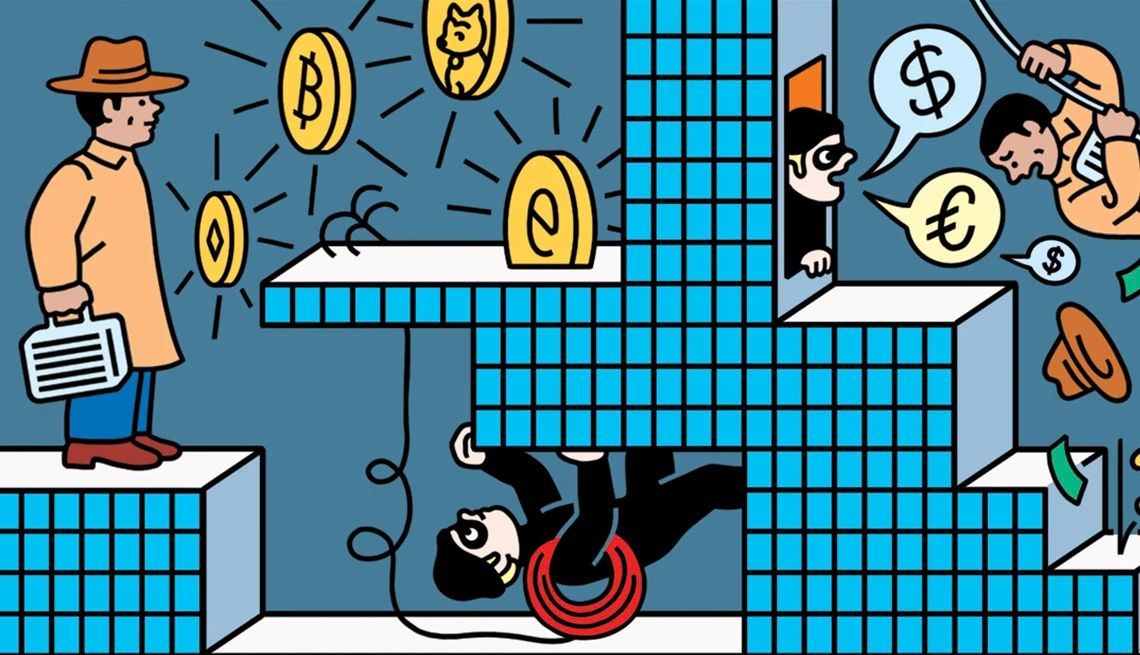AARP Hearing Center


Older Americans have lost an alarming amount of money to investment scams in recent years. In 2023, people 50 and older reported more than $900 million in investment-related fraud to the Federal Trade Commission — far more than the combined reported losses to romance, tech support and online shopping scams. The median investment loss was at least $9,500. (For more on the ongoing war against all types of fraud, see the April AARP Bulletin.)
Although these scams come in many varieties, they often share the same red flags:
- Investment strategies are hard to understand (as is often the case with cryptocurrency, for instance).
- Risk-free returns are promised.
- It’s insisted that you act soon or lose your chance for a big payout.
To put you on alert, here’s a roundup of fraud alleged by prosecutors and regulators, along with a guide to some of the reddest flags.
Cryptocurrency
Crypto-related fraud is rampant, often in the form of criminals touting sure bets on cryptocurrency investments, using bogus websites to demonstrate (fake) profits.
Recent case: From October 2020 to August 2023, a group known as Fundsz promised investors no-sweat annual profits of 365 percent through cryptocurrency trading and other “healthy and sustainable” sources of income, alleges a complaint filed by the Commodity Futures Trading Commission (CFTC). “Make Money While You Sleep” and “Passive Income With ZERO Effort on Your Part,” reads one Fundsz marketing slide included in the complaint. An alleged ringleader touted a “proprietary algorithm” but declined to reveal “the secret to our sauce.” A court-appointed receiver calculated that more than 9,000 investors lost a total of $15.7 million.





































































More From AARP
6 Top Scams to Watch Out for in 2024
Criminals are supercharging old scams with new technology
Precious Metals Scams Target Investors Amid the Pandemic
Crooks take advantage of dire times to fleece the anxious
Money Quiz: Can You Spot Investment Fraud?
Learn to keep yourself safe from scams
Recommended for You